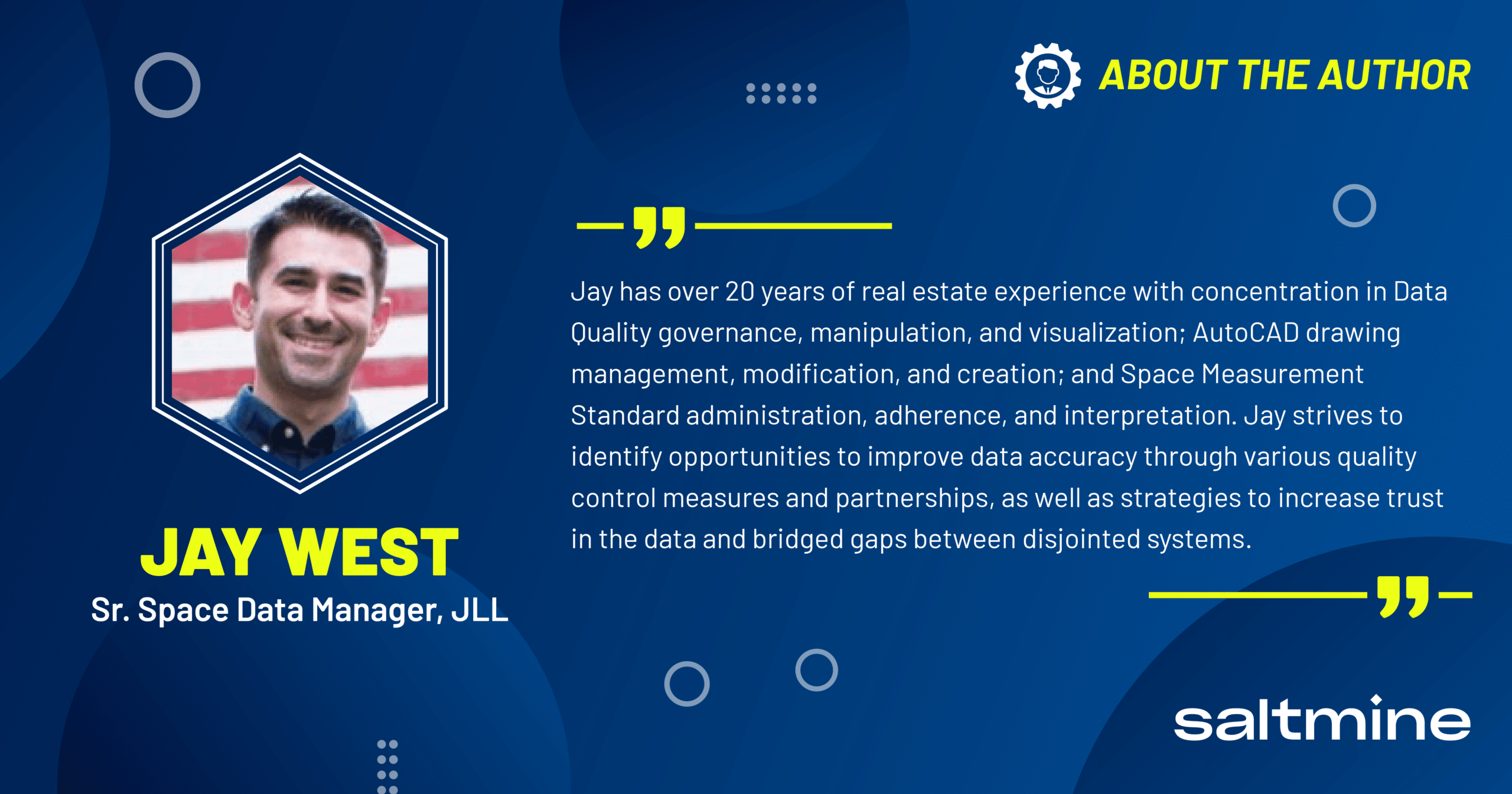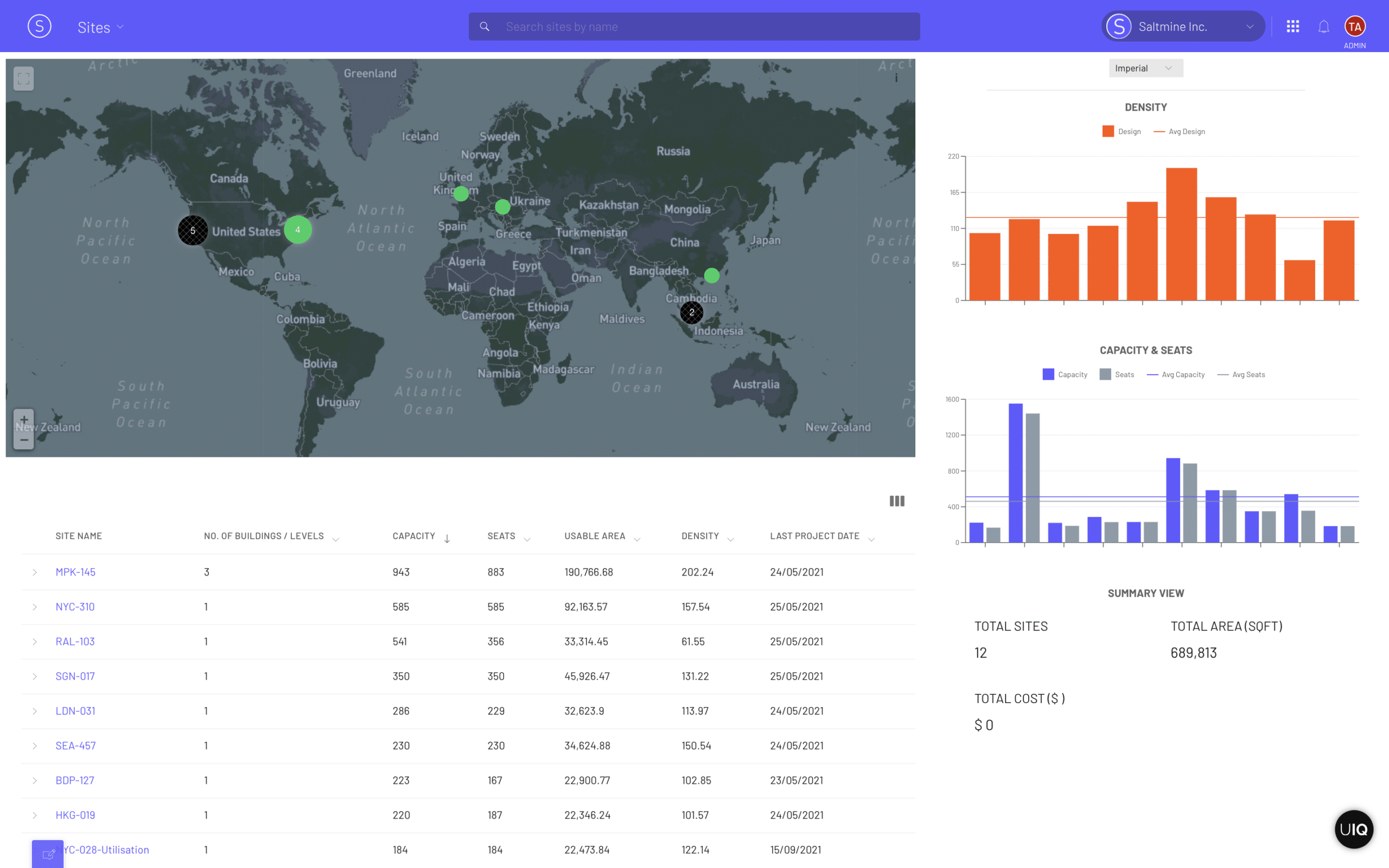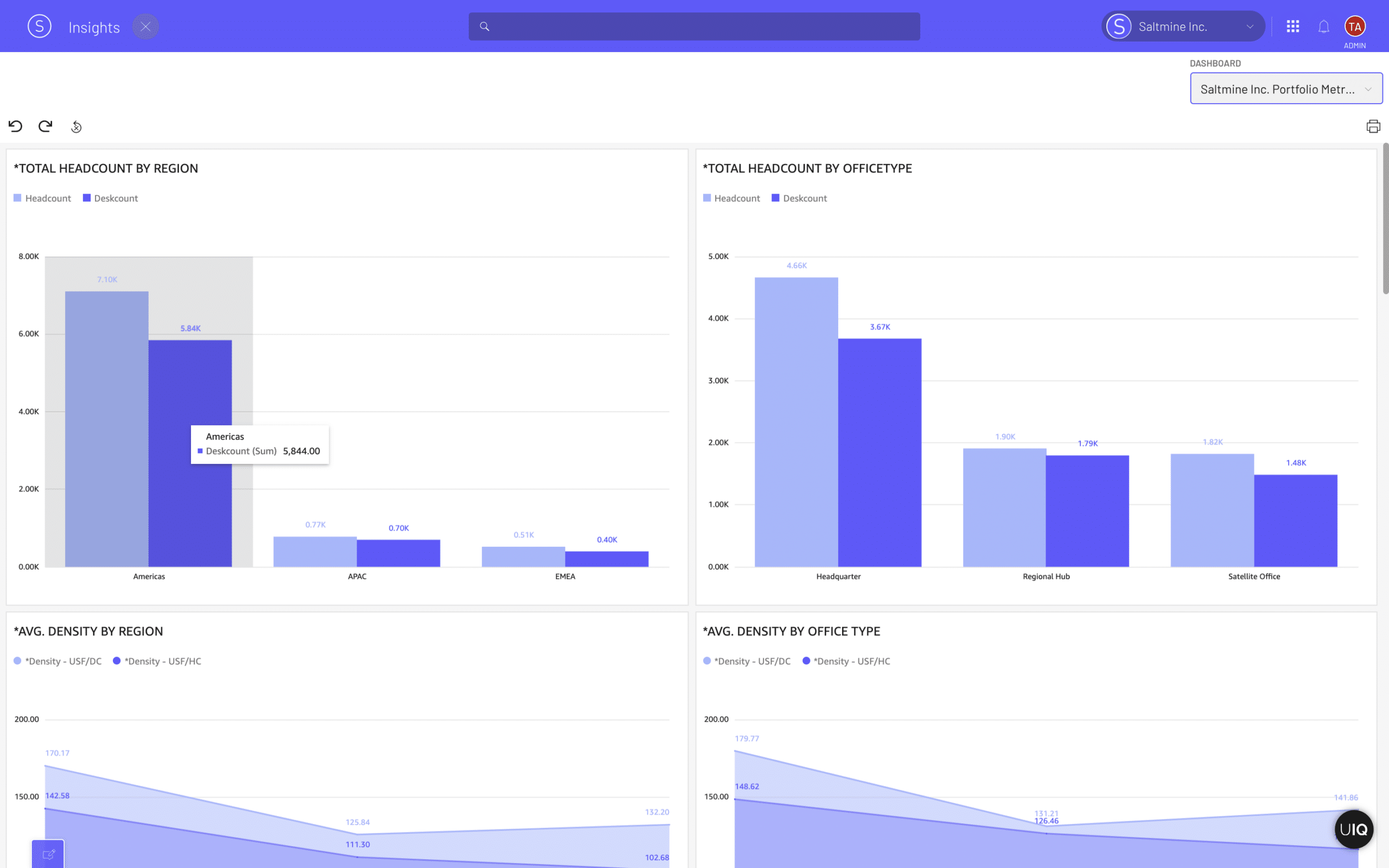Capturing Employee BehaviorUnderstanding the state and quality of your workplace’s data is key for making informed space planning decisions and future space iterations.
When it comes to your future of work, the state and quality of your data matters and for many space planners and occupiers, the granularity of noisy and inconsistent data is a major pain point.
Understanding the multiple sources of data points and siloed data is a key contributor to discrepancies and inconsistencies. For example, HR may call certain spaces one thing and IT may call the same spaces something else. Another example would be building counts—are they leased? Owned? Can space planners quickly get that information from one place? Or, do they have to embark on a scavenger hunt to try and piece together a holistic view of the real estate portfolio?
The downstream effect of this creates confusion for space planners as they’re then tasked with the time-consuming and manual process of consolidating fragmented data points.

How do you know if you have noisy, inconsistent data?
From desks and different types of meeting rooms, to the various types of lounge areas and social spaces—there’s a ton of granular information that must be considered in order to properly understand real estate data. Unless every team is calling specific spaces the same thing, noisy and inconsistent workplace data will be the result.
The consequence of this increases the amount of time it takes to properly understand your real estate portfolio. And with the C-suite wanting workplace teams and space planners to make decisions quickly, fragmented data points get in the way of making crucial decisions in a timely manner.
Why is this a problem?
Siloed, noisy, and inconsistent data decreases the amount of trust organizations have in their data, which is a big roadblock for future space planning efforts, space iterations, and realizing your future of work.
In short, space planners and occupiers must be able to trust their data in order for it to have value.
Consistent data by way of space classification and data centralization
Generally speaking, one of the best ways to nip inconsistent data in the bud is to engage in space classification and data centralization. Simply put, space classification is how space planners and occupiers can “bucketize” or group space types and understand how specific spaces are used. Whether you have a lean or global real estate portfolio, how you classify and measure space should be uniform across all floors and buildings.
Once you have a consistent way of classifying data points, it’s just as important to centralize all your classified data into a single source of truth. It’s a good thing to have everyone calling specific spaces the same things but if data is still siloed in different places, holistically viewing all the data points in a real estate portfolio will still be a challenge.

For example, Saltmine allows space planners and occupiers to plug in much of their classified workplace data into one place. From occupancy sensors and badge swipes, to reservation system data—a platform like Saltmine allows space planners to centralize their various data points into one comprehensive platform.

- Extract and understand what they’re working with by creating a baseline. Having a starting point for data allows one to not only identify where potential pain points and discrepancies may exist but also creates a means to compare all future changes. Your baseline should not be altered—instead, it should be used to compare future. This allows you to set measurable goals or to report achievements—e.g., “Null Space Class assignments were reduced by 30% last quarter.”
- Apply “checks and balances” to space classifications. This helps put data points into tangible classifications and makes it easier to take inventory of what you have—providing a more succinct approach to space planning. One cannot perform accurate space planning if space classifications are missing or incorrect. Visual highlights by space type on a floorplan are a quick way to see mismatched assignments—e.g., a bathroom highlighted as a conference room.
- Identify the root causes of errors and stop them from occurring again. Creating dashboards and reports to catch errors—such as data discrepancies, data integrity issues, missing data, etc.—help maintain the quality of data which builds ongoing maintenance into data collection and analysis.
Confidence: The outcome of understanding data state and quality
In short, the biggest outcome space planners and occupiers can achieve by understanding their data’s state and quality, is a higher confidence in space planning and future space iteration. Trust and understanding in the data can reduce the amount of potential rework, should errors in the data be discovered, resulting in cost avoidance.
The future of data can be very gray and ambiguous–worker tendencies, habits, preferences, and trends are evolving—and by properly classifying and centralizing your data, you’re able to more confidently plan space. Having confidence in your data is at the cornerstone of making the most informed decisions—especially when it comes to space planning and future space iterations.
The intersection of people and data
In the broad scheme of things, collecting workplace data is done to accomplish one thing—to better understand employee behavior. To learn more about the intersection of people and data, click the button below to see how Jay and fellow JLL colleague, Hannah, leverage data to enhance the employee’s office experience and get the best ROI on office space for the business.
Enjoying our blog? Be sure to subscribe to stay up-to-date on Saltmine's original content with the form below!


